Remember all those climate lawsuits led by young people? Suing the government to take action on climate change? Well, we have some terrific news to report from Hawaiʻi!
A group of young people sued the State of Hawaiʻi Department of Transportation over climate and just reached a settlement. Which means that the state is now committed to take real and immediate actions to end fossil fuel use in our transportation.
The lawsuit is called Navahine v. The Hawaiʻi Department of Transportation, and it developed like this: In 2022, thirteen children and teens from across the islands sued the state, with the help of the public law firms Our Children’s Trust and Earthjustice. The young people asserted their right to a safe and healthy environment, a right that is guaranteed in the Hawaiʻi Constitution. They argued that the state consistently chooses to build highways instead of more climate-friendly projects. (And as a resident, I can attest: they’re right!) So they sued the state Department of Transportation, claiming that by allowing emissions to rise it is violating their right to a healthy environment. They asked it to commit to ending fossil fuel pollution.
It was a brilliant strategy, because emissions from transportation are the biggest part of our state’s carbon pollution, and those emissions have been going up and up, with no end in sight. The case was scheduled to go to trial on June 24, but just days before, on the summer solstice, the governor and the young people together announced a settlement.
The settlement
This climate settlement is the first of its kind in the world. It is a huge deal! And the young people won some fantastic commitments.
First and foremost, the state is required to completely end fossil fuel emissions from transportation by the year 2045. It means ending carbon pollution in all our driving and all our shipping and flying between islands. This is a massive win!
And the state has to go to work right away. There are five-year benchmarks, and in the first of them it will build a network of public charging stations for electric vehicles and also complete a network of pedestrian and bicycle trails. As a resident, I can tell you that these very basic improvements have been sorely missing.
Why are the kids doing this work?
I am cheering wildly for the young people and this victory they’ve won for all of us. This is a historic agreement, and it will change how we get around in Hawaiʻi in the very near future. I am awed by the bravery and strength of these young people.
I just have one question for all of us: Why are these children doing the work of adults?
So today I’d like to spend time reflecting on climate change and why these young people shouldered so much responsibility for pushing for change at this moment in time.
And getting to know a few of the young people gives us a big clue.
The young people
Many of the plaintiffs are Indigenous, and they have similar stories to tell about climate change and what it’s doing in their communities. The lead plaintiff, Navahine, is a tenth-generation Hawaiian from a farm family that grows kalo, or taro. Kalo is a staple food of Hawaiian people; it’s made into poi. But kalo is way more than just food. Kalo is family. The Kumulipo, the Hawaiian creation chant, says that kalo and human beings have the same mother and father, for Papahānaumoku, the Earth Mother, and Wākea, the Sky Father, brought forth first the kalo plant, then the first human child. So kalo is an elder sibling, which means kalo deserves the deepest love and respect from all the younger brothers and sisters.
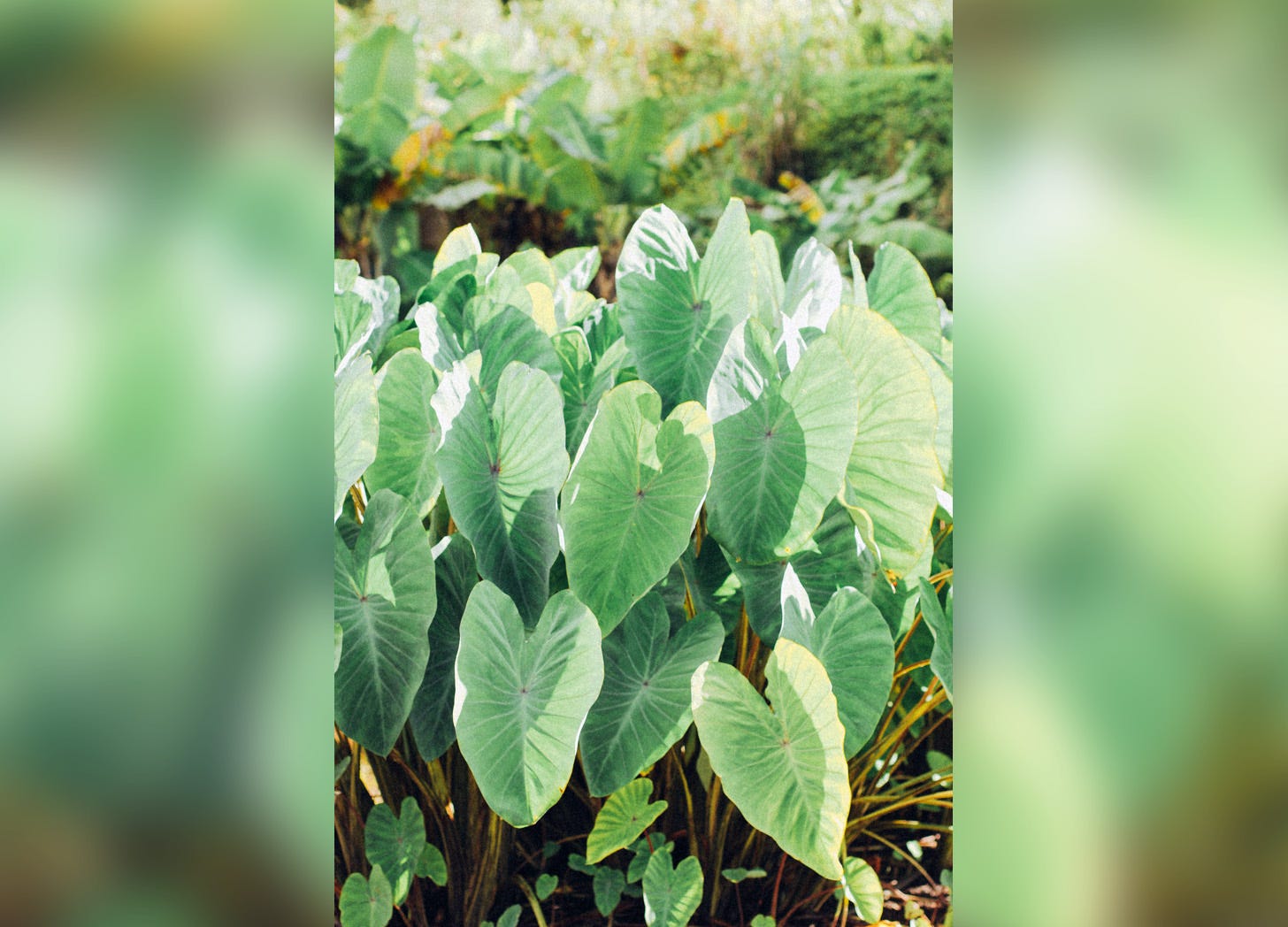
Navahine says that her family’s kalo fields are threatened by rising sea levels. She is watching saltwater creep toward the fields, and at this rate it will flood some of those fields during her lifetime.
Navahine is sixteen years old.
Rylee Brooke is a Native Hawaiian from Oʻahu who has grown up snorkeling and diving and swimming with sharks. Her family relies on local fish and limu, or seaweed, for their food. Even over her short lifetime she has watched the fish populations decrease around Oʻahu, and she’s worried about whether there will be food in the coming years. Should she have her own children in the future if the climate crisis continues?
Rylee Brooke is sixteen years old.
Kaliko is a Native Hawaiian originally from Lahaina, here on Maui, where her family lived for nineteen generations. But in 2018 Kaliko and her family lost their home when Tropical Storm Olivia washed it down a stream. Then last year, the catastrophic Lahaina fire destroyed her father’s house as well, along with the family heirlooms.
Kaliko feels climate anxiety, and she has felt it for most of her life. “I joined this case so nobody would have to experience what I have experienced,” she says.
Kaliko is thirteen years old.
As I read through the bios of the young plaintiffs, I am struck by the enormity of the losses these children are facing. They are losing their homes; they are losing their way of life, their family’s ability to eat and sustain themselves. When you watch your way of life disappear before your eyes, you summon the courage to do what you can to fight for it.
And these children did have to be brave. Thirteen-year-old Kaliko says she was scared of the lawsuit going to trial because she would have had to testify, so she is glad the settlement came first.
The Magnitude of All Things
To help me focus my thoughts on climate change this week, I watched a film called The Magnitude of All Things, from 2020. The film is quiet and moving and beautiful, a film that weaves together stories of loss and hope. The director is Jennifer Abbott, and when the film opens she is losing her sister to breast cancer. Jennifer finds her own heart so raked open with love and grief that she takes the opportunity to open it still further, to people who are losing their homes and homelands because of climate change. The film weaves her story together with theirs.
She first visits Nunatsiavut, an Inuit community in Canada, and speaks with Sarah Baikie, an older woman, a traditional artist.
“Everyone can relate to grief of losing a loved one because that’s universal,” Sarah says quietly, sitting in her kitchen. “But grief of losing your homeland . . . I never ever thought of this as something that it’ll be lost forever. But, it is,” she says, tearing up. “I don’t how how to explain it really. I never ever thought there might be a time when the ice wasn’t going to be solid to travel on.”
And as I watch, I feel something in a new way—a closeness to the land that goes so deep that losing it wrenches you in similar ways as if your sister were dying. “I don’t know how to be able to explain it, to you or anyone,” Sarah repeats. “You really don’t realize how much you’ve lost until you stop and think about it,” she adds, her throat closing in tears.
Jennifer takes us later to the central Pacific, to the Republic of Kiribati, a nation of atolls and islands straddling the equator. The islands of the country average only about six feet above sea level, and at the rate the sea is rising, all of them will be submerged in fifty to seventy-five years.
The former president of Kiribati, Anote Tong, speaks with quiet dignity. “For us it’s real. It’s not somewhere in the background which has no relevance. It’s here and now, in the middle of us, middle of our home—literally. During the last high tide, water was coming into our home.” The film shows bulldozers erecting dikes in the middle of turquoise bays and people stacking sandbags into high walls. He goes on, “I think my greatest fear is that one day there will come a storm. And then it will all be gone, before anybody realizes and acknowledges that it is real.”
As I watch, I take in his words, take them in deeply. And again I can feel it—the difference between knowing that climate change is happening and actually living in a place that is right now disappearing. It’s the difference between being deeply concerned about how the Earth is changing, as I and many people are, and watching your own country disappear.
“Are we as islanders erased?”
As if I haven’t already gotten the message, another voice chimes in. I am in the car, driving ten minutes away to an appointment, so I turn on the radio for company. And on the radio is a local program I’ve never heard before, and for the next ten minutes I am transfixed, because out of all the possible things that can come out of a radio, those ten minutes are gripping. Maybe you know this car radio magic too.
One of the guests on the program is ‘Aulani Wilhelm, a Hawaiian ocean conservationist. Back in 2006 she led the process of setting up the first marine national monument in the US. It’s the Papahānaumokuākea Marine National Monument—the name comes from putting together the names of the Earth Mother and Sky Father. This national monument is enormous—1300 miles of coral reefs and atolls, and they stretch out to the northwest of the main Hawaiian islands. It’s larger than all the US national parks combined, and ‘Aulani Wilhelm was its first manager.
I tune in just in time to hear her talk about that word manager. For the Hawaiian people, she says, the relationship is not one of managing or oversight. The Kumulipo chant teaches that baby coral was the firstborn of the Sky Father and Earth Mother, and then a thousand generations later they brought forth a human child. So coral is the people’s oldest ancestor. ‘Aulani Wilhelm says, “When you’re a descendant of these coral reefs that are our oldest living nonhuman ancestors, we’re not managers of these places. Our responsibility is completely different, because this is about our ancestry. This is about taking care of our cousins, our grandparents, our parents.”
If coral is your ancestor and coral disappears, can you still know your own heritage?
‘Aulani ends with this question: “In the face of climate change, when our islands go away, are we as islanders erased?”
Land and identity
Her question bores its way into me, and I realize it’s one I have never considered: If my land gets destroyed by climate change, is my identity erased as well? It’s a question I can barely even imagine asking. Few of us white people can. We are not tethered to the land with the umbilical cord of love in the way that Indigenous people are. In the morning, when our feet first touch the floor, most of us do not experience that moment as saying good morning to our mother the Earth.
I think in the backs of our minds is the idea that if we have to evacuate at some point because of forest fires or floods, we can always find somewhere else to go. Leaving our home would shake us, but it would not fundamentally alter our identity. We assume we could start over in a new community, buy our food at different grocery stores. The world around us might change, but we would still be very much ourselves.
What I hear from Indigenous people is that this is not their reality. Being rooted in a homeland means that losing land means losing the self. I hear them say that they understand who they are because they are here, in this place, and everyone here is family. These fish and coral reefs who provide their food, or that ice, which is a highway, or those four mountains holding down the four corners of the horizon are all family members just as certainly as are the people living under the same roof. Indigenous people who are forced to move do not remain the same people. They are grieving not just food sources or scenery, but their closest family members. Such losses change people to their core.
Am I doing what I can?
The Hawaiian young people who stepped up to sue the Hawaiʻi Department of Transportation are feeling this level of threat. They feel the climate emergency in their bones, the threat to their very identity. So they are doing everything in their power to fight for their survival.
Which leads me to ask, Am I doing as much as I can for the climate? If I felt that the coral reefs were my ancestors—truly felt that in my bones—would I be spending more time advocating for them? If any of us watched our homelands disappearing, would we be working harder to end fossil fuel use? The homelands of North American are disappearing too, of course, it’s just that most of the time it’s not quite so visible. And it’s hard to feel urgent about an abstract idea like 1.5 degrees Centigrade of warming, which is the limit that scientists say we need to stay under for the planet to remain livable. We don’t feel that abstract number in our bones. It belongs to a future that is still hazy, unknown. Someone else’s future.
But the children are feeling the urgency. It is their future that is being written now, their choices that will be curtailed by the choices we make today.
Which is why decreasing our own carbon emissions is still important, even now at a moment when many people are downplaying them. The message came around recently that the concept of a carbon footprint was dreamed up by oil companies to distract the rest of us from their overwhelming responsibility for the climate crisis. So a lot of climate-concerned people, including some prominent voices, began urging people not to focus on our own carbon footprint because individual actions will never save us. The part of the message that tends to get lost is that we need to be taking that energy to our governments, to put pressure on them to quit fossil fuels. Which is why the young people’s lawsuit in Hawaiʻi is such a big deal—it pushes the state to make change on a large scale.
Climate legacy
And at the same time, I believe there is always a place for changing our individual behavior. It’s not either-or, either individual actions or government solutions. We need both. And it’s because of the children. The children of tomorrow.
Because any carbon each of us emits now is forever—it will last thousands of years. Climate scientist Kim Nicholas writes in her book Under the Sky We Make that each of us leaves a climate legacy. “Long after any traces of us are gone,” she writes, “this carbon legacy will define us in the minds and stories of our distant descendants. It will literally define the terms of their lives: where they can live, how they can make a living, what kind of nature surrounds them.”
So it’s not just that our own emissions may be tiny compared to, say, those of wealthy people jet-hopping from airport to airport. It’s that any carbon added to the atmosphere heats the Earth. Whatever fossil fuels each of us burns, however small, is right now raising the temperature, if only a little, for the children of tomorrow. Which also means that any oil and gas we don’t burn helps to slow the pace of warming—maybe only a fraction, but every fraction helps.
And according to the scientists, the one change we can make that will have the biggest impact is in our transportation. Kim Nicholas always reminds people that it’s still important for those of us in the affluent world to decrease our driving and our flying as much as we can.
Cultivating changes
And there are many other ways as well to help heal the world of a hot climate. I had a happy surprise while watching the film The Magnitude of All Things. Deep in the middle of it a familiar face showed up, a woman sitting with other women at a kitchen table, talking about the bushfires in Australia. That face turned out to belong to Sally Gillespie, whom I had just met on Substack, because she just started her own newsletter a few weeks ago. It’s called Psyche’s Nest, and please go find it and read it. Sally is exploring in very loving and sensitive ways all those messy layers of feelings and confusions that arise when we try to address climate change in our daily lives.
For example, she talks about exploring a different way to make changes in daily life—not the usual “will-driven way,” as she calls it, imposing changes on ourselves because we feel we should. She asks, What does it look like instead to explore changes from a deeper part of ourselves—by listening to the whispers of the heart and the images that arise in our dreams? I leave you to enjoy the story she tells about what that process looks like for her, and you can find it in her most recent post.
When I think about finding our way through this confusing territory of climate change, I think about how important it is to find what is ours to do—not trying to do more than is ours to do, but also not less. I think about changes that might be inspired because we are so in love with the Earth that we shape our lives to reflect that love. That we walk in a way that each step says thank-you for the lavish, unearned gifts of beauty and breath.
I think too about deepening our love for our own place, practicing feeling the warmth of kinship as we walk down our street. Saying hello to the trees, the birds in our neighborhood. Some words long ago from Carol Lee Sanchez of the Laguna Pueblo still inspire me. She wrote, “There are trees and grasses and flowers and birds and ants and bees waiting for you to ‘send your songs’ to them—to say hello to them—to call them sister, brother, cousin, or friend. They are your relatives; they hear your thoughts as you travel around your town or city, back and forth from your home.”
And when we put our own Earth-love together with the Earth-love from other people, sometimes we can make mighty changes. I would like to give the last word today to Kalalapa, one of the youth plaintiffs. She says, “This case is really signifying that you never know what you can do as a person, and that everyone can make change, and that you literally can make change that will affect generations of people. And I feel really proud to have been a part of that.”
For digging deeper
Article XI, Section 9 of the Hawaiʻi Constitution reads, “Each person has the right to a clean and healthful environment, as defined by laws relating to environmental quality, including control of pollution and conservation, protection and enhancement of natural resources. Any person may enforce this right against any party, public or private, through appropriate legal proceedings, subject to reasonable limitations and regulation as provided by law.”
On the reasoning behind this particular lawsuit, see “About the Case” at Our Children’s Trust. Bios of each of the young people are at Our Children’s Trust, “Youth Plaintiffs.”
Brief interviews with two of the plaintiffs are at “‘Everyone Can Make Change’: Hawaii Youth Plaintiffs Reflect on Historic Climate Settlement,” WBUR Here & Now, June 26, 2024.
‘Aulani Wilhelm appeared on The Conversation, from Hawaiʻi Public Radio, June 17, 2024.
Pick up Kim Nicholas’s book, Under the Sky We Make: How to Be Human in a Warming World (G. P. Putnam’s Sons, 2021). It’s chock-full of ideas for how—and why—to make lowering our own carbon footprint a regular, uneventful part of daily life.
Calculating your own carbon footprint can be eye opening—and provides a great window into where to focus your own efforts. For an excellent and simple online calculator, go to the CoolClimate Network out of the University of California, Berkeley.
Sally Gillespie reflects with great tenderness on how to meet the ecological crises of our time; see her newsletter, Psyche's Nest.
Carol Lee Sanchez’s words come from “Animal, Vegetable, and Mineral,” in Ecofeminism and the Sacred, edited by Carol J. Adams (Continuum, 1993), 225. The book is out of print but available at the Internet Archive.

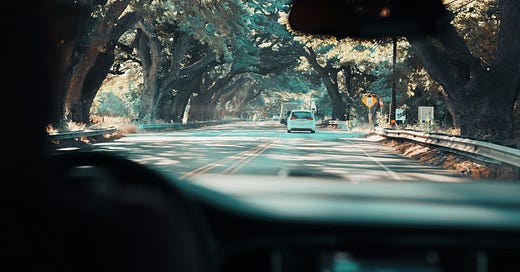


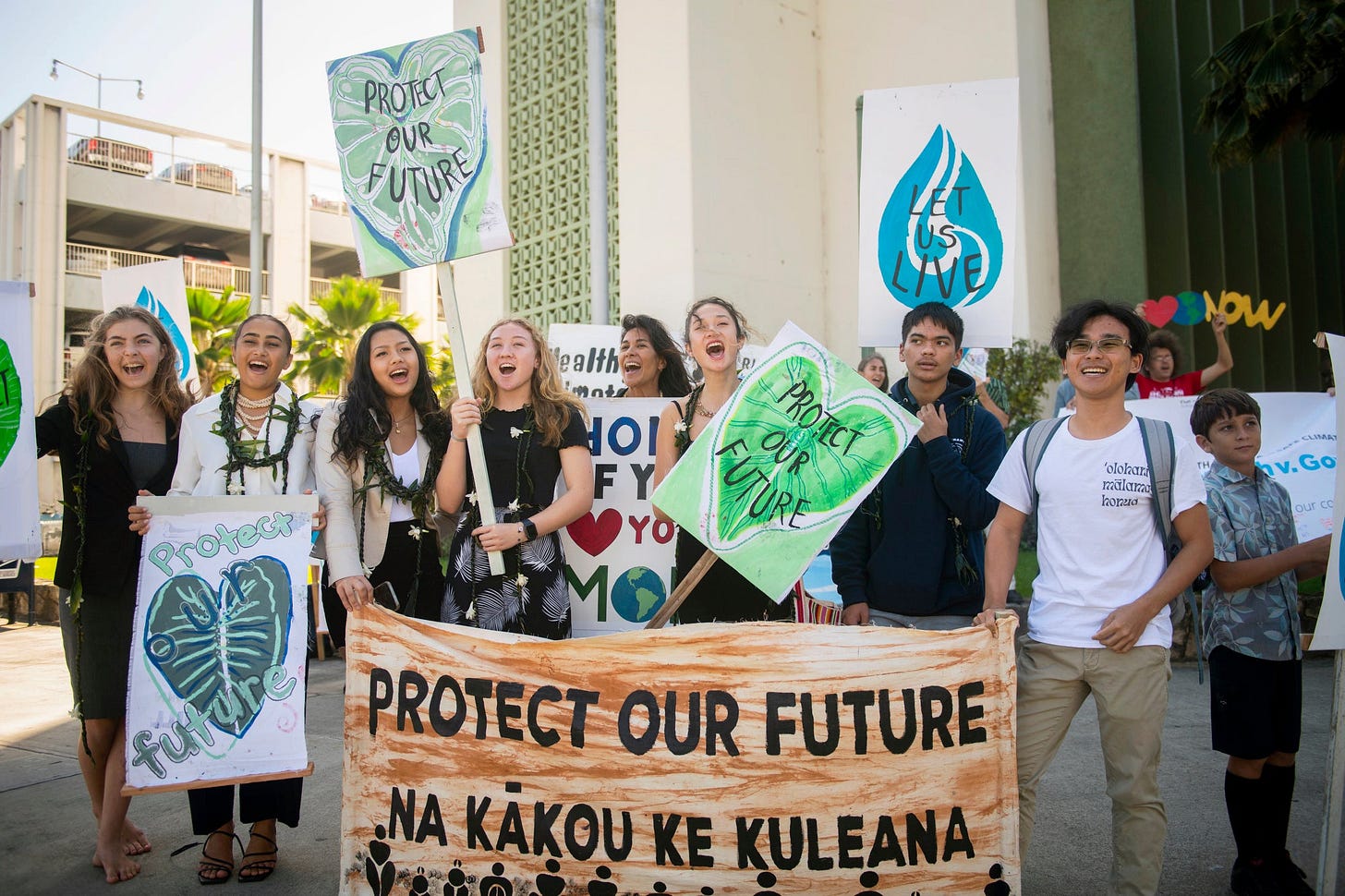

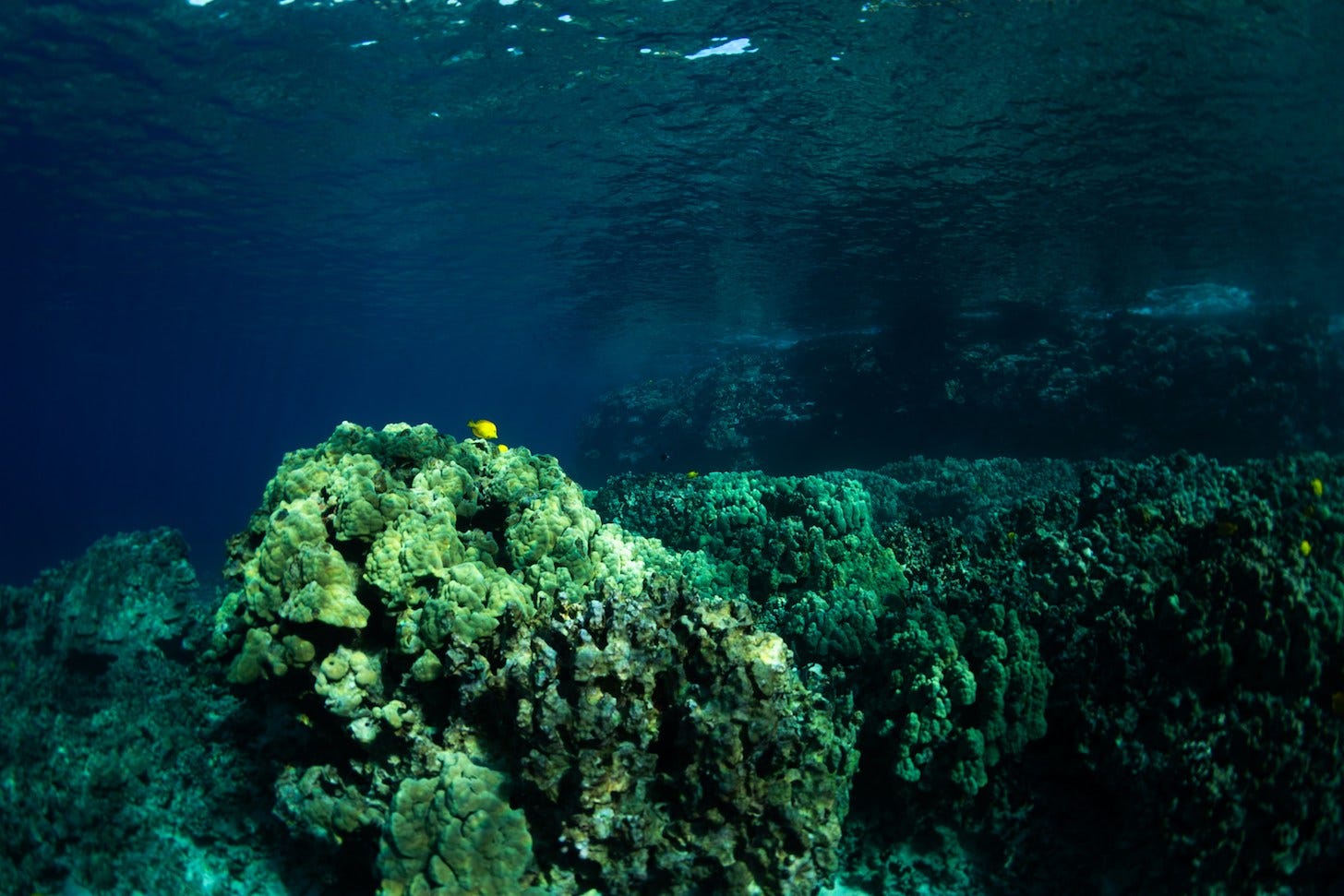




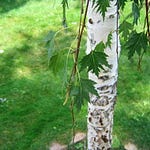



Share this post